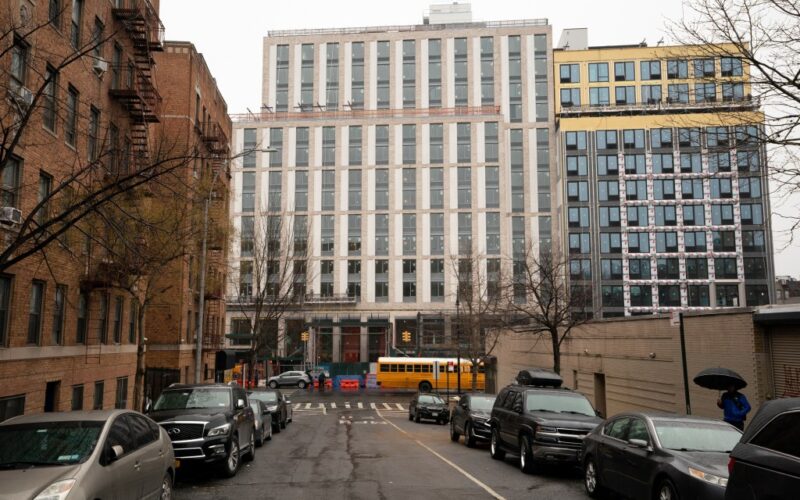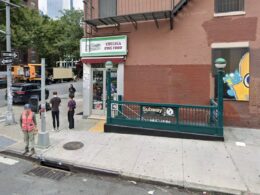New Yorkers know we need urgent action to address our housing crisis. The rent is too high and wages aren’t keeping pace. Forty percent of New Yorkers are rent-burdened: that’s two million of us who cannot afford our housing costs. Too many colleagues, friends, family and neighbors — from low-income families to middle-class professionals — are being forced out of the city. Businesses, too, are sounding the alarm: they cannot succeed if their employees can’t afford to live here. Our housing crisis makes our city less dynamic, less diverse, less competitive, less equitable. The status quo is not working.
We all feel it. Yet, individual New Yorkers often wonder what they can do about it. After all, most of us aren’t building affordable housing. But this November, voters can take action. The NYC Charter Revision Commission — an effort I was proud to lead — has put common-sense reforms on the ballot that can make housing more affordable for everyone.
After extensive input from residents from every corner of the city, we voted to put four housing proposals on the ballot for November. (A fifth aims to increase voter participation by aligning city elections with federal elections). Many New Yorkers might not realize just how complicated, lengthy, and expensive it is to build affordable housing under our current system.
For example, even fully affordable, publicly funded housing must navigate an expensive and years-long approval process, often requiring multiple redundant approvals. Moreover, our land-use review process, known as ULURP, treats the development of a 10-unit apartment building the same as it does a megaproject like Hudson Yards. This one-size-fits-all approach discourages modest apartment buildings that “fit” existing neighborhoods and that communities often prefer.
Our proposals would streamline the review of projects like these. They would save time and money and allow us to redirect resources and energy into creating more housing, achieving deeper affordability, and ensuring more New Yorkers have access to stable homes.
The current system also unnecessarily hampers our ability to quickly respond to climate change. Simple but crucial resilience improvements — such as raising street levels to prevent flooding or installing solar panels — face cumbersome and unnecessary review. Streamlining these processes will help us protect communities from increasingly frequent flooding, ensuring that climate-resilient infrastructure can be implemented swiftly and effectively.
Another significant barrier is the “Not In My Back Yard” phenomenon, where small groups of vocal opponents game the system to delay or even block worthy housing projects. As a result, some neighborhoods see lots of new housing, while others add none at all. In some neighborhoods, developers won’t even consider proposing affordable housing because they know local elected officials would never support it.
Our reforms would create an Affordable Housing Fast Track to permit affordable housing development in the community districts that are producing housing at the lowest rates. It would also create an Affordable Housing Appeals Board composed of the mayor, the affected borough president, and the Council speaker, providing a fair public hearing for affordable housing projects that fail to receive approval. Together, these reforms help ensure more affordable housing is built more quickly, and that the housing is distributed more evenly.
Importantly, our commission’s proposals advance affordable housing while preserving the critical role of communities in driving their futures. Under our proposals, Community Boards retain their essential role, bringing their local expertise to bear on important decisions.
The time to act is now. Rising housing costs push out New Yorkers who need this city the most, including immigrants, LGBTQ New Yorkers, younger residents, and people of color. We see Black families not only being pushed out of historically Black neighborhoods, but out of New York altogether. This exodus fractures families and hurts our city: our schools have lost more than 120,000 students (and the associated funding). For every home we do not build, our city becomes a little less diverse and we foreclose on the future of a family looking to build a life here.
These reforms alone will not solve our housing crisis, but they represent meaningful steps toward building a fairer, more accessible city. A lot has changed since 1975 and 1989, when these rules were created. Back then, New York looked like a city in decline.
But these days, we are the victims of our own success: people want to live in New York. We need to update our land-use processes to meet the moment. This November, New Yorkers will have the power to take concrete action to build the equitable, thriving city we need.
Buery is the chair of the Charter Revision Commission.








